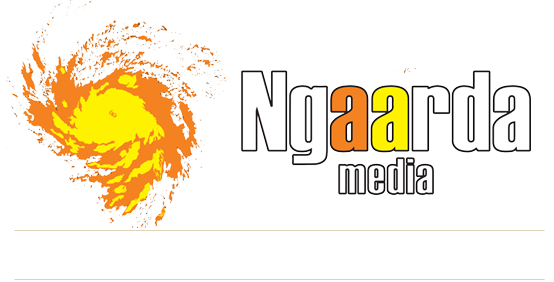WA ROAD TOLL HITS DECADE-HIGH AS FIRST NATIONS DEATH RISE
The 37-kilometre stretch between Roebourne and Karratha
BY ASAD KHAN
Western Australia’s road toll has surged to its highest mid-year figure in over a decade, with 87 lives lost by June. First Nations people remain grossly over-represented, particularly in remote regions where access to safe transport and licensing remains unequal.
One road – the 37-kilometre stretch between Roebourne and Karratha has become a flashpoint for grief, frustration, and urgent calls for reform. Community members, advocates and politicians are demanding change, warning that continued inaction will cost more lives.
Friends and family of crash victims witness the aftermath of the crash.
A Stretch Marked by Loss
The North West Coastal Highway between Roebourne and Karratha is not just a road, it’s a lifeline. It connects families, communities, and the resource economy that powers the nation. But it’s also become a corridor of trauma.
Over the past year, five people have died on this single stretch. White crosses and floral memorials pepper the roadside, standing as painful reminders of the lives lost: Dakota TahiTahi, 29, and Kobi Alan James Whitby among them.
Locals say these deaths are not tragic accidents; they are the result of poor road design, high-speed limits, and the government’s failure to act.
Koda TahiTahi victim of the recent fatal crash on the North West Coastal Highway.
Koda TahiTahi’s aunt, Tangiora Hinaki, said her niece’s death in May shook the whole community.
“We’re not even halfway through 2025 and already, to my knowledge, we’ve lost four people with ties to our community on that road,” she said.
“This is our main road. Everyone in Karratha, Wickham, and Point Samson uses it daily.”
The Traffic Is Heavy – and So Is the Grief
WA Main Roads data shows daily vehicle volume on the Roebourne-Karratha stretch has jumped more than 25 per cent since 2019. In 2024, more than 2600 cars and trucks travel it each day – many of them mining vehicles and oversized loads.
Despite the spike, the road remains two lanes: one heading north, one south. It has no central barrier, no overtaking lanes. In contrast, the nearby Dampier Highway, which carries less freight traffic, is a four-lane dual carriageway.
Regular users describe a daily gauntlet of near-misses. Melanie O’Donoghue, the aunt of 21-year-old crash victim, recently described a terrifying encounter near the same overpass where her nephew died:
“A car with a mining company logo was on our side of the road, coming straight for us. We nearly swerved off the road to avoid him. My heart was racing a hundred miles an hour.”
Another driver told Ngaarda Media he was forced off the road while overtaking a road train when an oncoming car suddenly appeared.
These stories are not rare; they are shared with resignation at local gatherings, in Facebook posts, and now in the open letter from residents calling for urgent change.
A Call for Safety – and for Justice
The community elders are calling for concrete action:
A dual carriageway
A central median barrier
More overtaking lanes
Fair investment in regional safety infrastructure
While more than half a million dollars has been allocated to upgrade the Dampier Highway, no comparable investment is earmarked for the North West Coastal Highway.
Road Trains on the roads of Western Australia
The stakes are high. With up to a quarter of traffic made up of heavy vehicles, including road trains and trucks carrying ammonium nitrate, there’s little room for error. Lane widths hover at 3.5 metres, yet a road train is 2.5 metres wide. That leaves a single metre of clearance, assuming both drivers stay perfectly in line.
Wake turbulence from passing trucks can rattle smaller vehicles. Blinding sun glare in the early morning and late afternoon adds to the risk, particularly for fatigued shift workers commuting between towns and mine sites.
First Nations Fatalities: A Crisis Within a Crisis
As the overall toll climbs, the data reveals a deeper injustice. First Nations people are three times more likely to die on Western Australian roads than non-Indigenous people.
Outback Western Australia totajla/Shutterstock
Shadow Road Safety Minister Julie Freeman said these figures should be impossible to ignore.
“You’ve got to go to the point of need. If First Nations people are over-represented, they must be a priority in rolling out road safety initiatives,” she told Ngaarda Media.
“For First Nations people living in the regions, that’s a double-barrel; the danger is multiplied.”
Yet the WA Government did not include the Opposition in its 2023 Road Safety Summit, and the new announcement of safety cameras to monitor seatbelts and mobile phone use will not include the Pilbara.
Ms Freeman argues this is short-sighted.
“Road safety shouldn’t be political. This is life and death.”
A State of Denial?
Soon after the latest fatal crash, a portable LED sign appeared on the roadside flashing “Speed Kills.”
The sign was spotted days after the fatal crash last month on the Roebourne-Karratha stretch
Kevin Michel, the Labor Member for Pilbara since 2017, has not responded to multiple requests for comment from Ngaarda Media.
Many across the Pilbara region feel his silence stands in contrast to the pain being felt by the locals.
The mother of Kobi Alan James Whitby permitted Ngaarda Media to publish this tribute to her son:
“We were so blessed to have you in our lives. You had such a big heart, and you showed your love to everyone. All your friends and family knew that you loved them and were there for them.”
The message echoes the broader grief – and the broader plea – shared by many in the Pilbara:
We do not want more excuses. We want to be heard.








